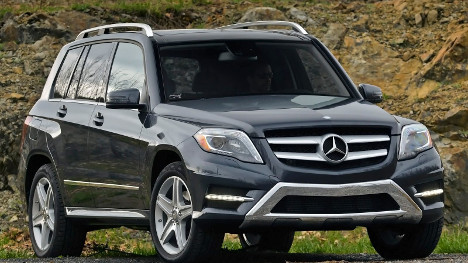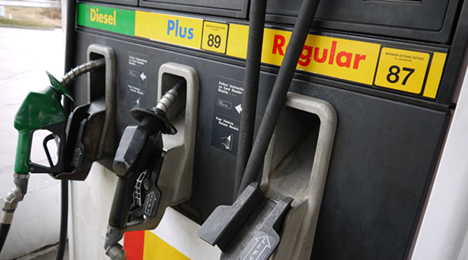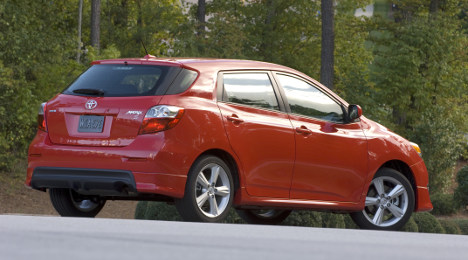The number of quality used vehicles at auction hasn’t expanded much this year, and initial positive forecasts for loosening supply in 2015 have been proven wrong. Consequently, prices at auction are still on the way up.
That said, residual reports do show expected price drops in the coming years — but buyers will have to hold out a bit longer.
This past August, the Manheim Canada index rose slightly by 0.9 points from July, while remaining up 17.3 points year-over-year.
Pickups, one of the most popular segments in Canada, saw a 9.1 percent increase, according to the index — the highest spike of all segments in August.
On the other side of the vehicle spectrum, compact cars saw a 2.7 percent rise on the index in August.
As the summer months wrapped up, it was apparent that interest in sports cars was waning — rates for this segment dropped 22 points on the Manheim Index.
Full-size cars also saw significant declines, as well, dropping by 9.5 points, followed by the van segment with a decline of 5.7 points in August.
RVI’s lasted residual Risk Outlook report showed prices bumping up in August, as well. According to the report, after being adjusted for MSRP, used-car prices were up 1.1 percent from July and showed a year-over-year increase of 6.6 percent.
This movement comes amid a suffering exchange rate, as in August, Canadian currency exchanged at 76 cents to every U.S. dollar — the lowest level since 2004.
This is pushing the vehicle export business, and putting even more pressure on used supply, and consequently, used prices, as well.
Josh Bailey, the vice president of research and editorial at Canadian Black Book, said in a recent interview with Auto Remarketing Canada, “From what we hear from our auction surveyors, there are still many U.S. buyers in the Canadian market making purchases, whether online or in the lanes, mostly motivated by the foreign exchange rate,”
“Naturally this creates some tension, but no doubt when Canadians were in the U.S. buying a few years ago, it was not any different,” he added.
Although used-vehicle prices increased in August, RVI expects a softening in residual values over the next few years.
In fact, RVI analysts predict used-vehicle prices will fall by 3 percent from current levels by 2018.
“The major factor in this decrease in prices is the increase in the supply of used vehicles in Canada. The RVI Used Vehicle Stock Index is expected to rise on a yearly basis through 2019,” the report said.
Editor’s Note: For more insight into the used supply environment in Canada, see the Power Supply feature in our upcoming Auto Remarketing Canada Power 200 digital magazine, set to hit the Web this coming week.
Fortunately for Canadian dealers, the recent agreement between Fiat Chrysler Automobiles and the National Highway Traffic Safety Administration in the United States is not expected to have any sort of negative market impacts for the brand in Canada.
That’s according to Geoff Helby, the regional director of industry solutions for the Canadian arm of ALG.
For the background on the situation in the U.S., here are the basics. On Sunday, the U.S. Transportation Secretary Anthony Foxx announced that FCA had acknowledged violations of the U.S. Motor Vehicle Safety Act’s requirement to repair vehicles with safety defects.
This is in light of a public hearing on July 2 where NHTSA officials outlined problems with FCA’s execution of 23 vehicle safety recalls covering more than 11 million defective vehicles. FCA later admitted to violating the Safety Act in three areas: effective and timely recall remedies, notification to vehicle owners and dealers, and notifications to NHTSA.
Via consent order issued by NHTSA, FCA agreed to offer owners of more than half a million vehicles with defective suspension parts the opportunity to sell their vehicle back to FCA. Owners of more than a million Jeep vehicles prone to fires will have the chance to trade in their vehicle in above market value or receive a financial incentive to have the vehicle repaired. To see the full requirements of the consent order, click here.
Helby provided some industry analysis for Auto Remarketing Canada, likening the situation to previous recalls and anticipating that FCA’s compliance will reap favorable benefits in the market.
“With rare exceptions, recalls have historically not impacted used-market values of vehicles,” Helby told Auto Remarketing Canada. “The key factor in whether the impact is negligible or negative seems to be cooperation with regulatory agencies on the part of the automaker. During the Ford Explorer rollover debacle and the Toyota unintended acceleration issue, both automakers were defiant and insisted they were not liable for any issues with their vehicles. This defiance, combined with high visibility in the mainstream media, caused a short term decline in vehicle values and brand perception.
“In all other major and minor recall campaigns, we have seen little data to suggest any negative impact,” Helby continued. “Even during the massive GM recall that prevailed through much of 2014. Thus, since FCA is now being cooperative with the effort, we expect no negative impact in market performance for the brand.”
According to LouAnn Gosselin, the head of communications at FCA Canada, it is not known at this time how many of the affected vehicles are in Canada or whether or not the owners of those vehicles will be presented a buy-back offer similar to the consent order in the U.S.
Gosselin emphasized that remedies for the recalls in question are available in Canada and urges consumers to make a service appointment to have them repaired.
"Safety is a paramount concern at FCA Canada,” Gosselin said via email correspondence with Auto Remarketing Canada. “Today’s vehicles are safer than ever. FCA Canada takes seriously the safety and satisfaction of its customers. Although the consent order announced today pertains to FCA US and NHTSA, FCA Canada is in regular communication with Transport Canada and will continue to work closely with Transport Canada officials. FCA Canada is reviewing the contents of the consent order, including the nature and population of vehicles that would potentially be affected by the order.”
July residuals are showing trends similar to those seen this past spring: larger models continue to out-perform the car segments.
Auto Remarketing Canada took a look at value retention data for 4-year-old vehicles from Canadian Black Book, which showed truck segments holding on to their value better than their smaller counterparts — with one exception.
The premium sports car segment is seeing the best retention out of all the segments CBB tracks this month, holding 54.86 percent of its value in July.
Next up were the full-size luxury SUVs, which held onto 52.85 percent of their residual value.
Other strong performers among the truck segments were the full-size pickups (50.97 percent), compact luxury SUVs (49.83 percent), small pickups (49.75 percent), subcompact SUVs (49.33 percent) and midsize luxury SUVs (49.27 percent).
The truck segment seeing the lowest price retention in July is the full-size vans, which are keeping 43 percent of their value.
Moving on to highlight some of the car segments, the worst performer this month for both cars and overall are the full-size cars, which are seeing retention of 33.61 percent this month.
Next up were the luxury cars, which are retaining just 38.73 percent of their value.
On the other hand, the best performing car segment, other than the trend-bucking premium sports cars, are the compact cars, which are holding on to 42.22 percent of their value.
Though diesel vehicles might not be the easiest sell these days, the latest results from Vincentric’s first Canadian Diesel Analysis might give dealers some talking points when trying to convince shoppers of the benefits of these units.
According to the results of the analysis released today, the company found that 12 out of 34 diesel vehicles, or 35 percent, had lower total cost-of-ownership than their closest gasoline counterparts.
The study also found that number goes up for luxury diesel vehicles. In this segment, 11 of 13, or 85 percent, were more cost-effective. The reports assume 25,000 kilometers are driven annually, and the vehicle is owned five years.
“Over the past several months we've seen the price advantage that gasoline has had over diesel fuel diminish, enhancing the fuel economy advantages of diesel vehicles,” stated Vincentric president David Wurster. “However, fuel economy is only part of the story. With total cost-of-ownership savings from only one third of the diesel models analyzed, consumers need to be informed when shopping for diesels to find the models that offer savings.”
Out of the 12 diesel vehicles with lower ownership costs, 11 were luxury models. These includes four vehicles each from Audi and Mercedes-Benz and three vehicles from BMW.
The Chevrolet Cruze Diesel was the only non-luxury diesel make to have lower ownership costs than its gasoline counterpart.
Breaking down the numbers, customers may have to shell out a bit more at point-of-sale as well as for maintenance costs — but the fuel cost savings make up for most of it.
According to Vincentric, the average price premium for a diesel vehicle was $5,650 with average maintenance costs $476 higher for the diesel models.
That said, diesel fuel cost savings averaged $4,005. Although fuel cost savings can add up and the luxury models stand out from the pack, when the costs to own and operate all 34 vehicles were taken into account, the average cost-of-ownership was $2,030 more for a diesel vehicle compared to its gasoline counterpart.
“There has been a lack of understanding of the benefits of clean diesel technology,” Vincentric analysts said. “This report demonstrates that in addition to improved environmental benefits of diesels, a strong financial case can be made for the adoption of some of these vehicles.”
In this analysis, there were 12 diesels that can be financially justified purely based on the total cost of ownership numbers, according to Vincentric:
- 2015 Mercedes-Benz GLK250 BlueTEC (-$9,201)
- 2015 Mercedes-Benz ML350 BlueTEC (-$8,050)
- 2015 Mercedes-Benz E250 BlueTEC (-$7,655)
- 2015 Mercedes-Benz GL350 BlueTEC (-$6,991)
- 2015 BMW 535d xDrive (-$4,650)
- 2015 BMW X5 xDrive35d (-$4,501)
- 2015 BMW 328d xDrive (-$4,060)
- 2015 Audi A6 TDI (-$3,804)
- 2015 Audi Q5 TDI (-$3,759)
- 2015 Chevrolet Cruze Diesel (-$3,484)
- 2015 Audi A7 TDI (-$3,139)
- 2015 Audi Q7 TDI (-$1,783)
When looking at fuel economy, these models provide the greatest benefit over their gas only counterparts:
- ·2015 Audi A7 TDI (-$6,826
- 2015 Audi Q7 TDI (-$6,659)
- ·2015 Mercedes-Benz GLK250 BlueTEC (-$6,654)
- · 2015 Audi A6 TDI (-$6,615)
- ·2015 Mercedes-Benz E250 BlueTEC (-$6,494)
Lastly, the diesel vehicles with the lowest overall fuel costs are:
- 2015 Volkswagen Jetta 2.0 TDI ($10,104)
- 2015 Volkswagen Golf 2.0 TDI ($10,313)
- 2015 BMW 328d xDrive ($10,329)
- 2015 Volkswagen Beetle 2.0 TDI ($10,623)
- 2015 Volkswagen Passat TDI ($10,655)
Wholesale prices are still way above pre-recession rates due to short supply, but seasonality may provide some relief for dealers this summer looking to stock up on inventory.
Car and truck segments across the board took a depreciation hit in May.
This is “in line with expected seasonality,” said Geoff Helby, ALG Canada regional director, in his commentary on the ADESA Canada Used Vehicle Price Index movement for May.
The Index was unchanged from May after being adjusted for seasonality, Helby said, but all price movements by segment were negative in May.
Midsize cars declined at the fastest rate, Helby reported; in May, prices for this segment were down 10 percent, or $975. At the end of the month, the average asking price for a midsize car at auction was $8,756.
This segment was followed by minivans with a 6.6-percent (or $705) decline to rest at an average price of $9,995, according to the ADESA Index.
Compact SUVs also took a bit hit, falling in price by 5.9 percent (or $794). The average price at auction for a compact SUV in May was $12,737. Next up were midsize SUVs (down 1.8 percent or $270), mid-compact cars (down 0.8 percent or $65) and full-size pickups (down 0.3 percent or $60), respectively.
Trucks continue to perform better when it comes to price retention than there smaller counterparts.
The Manheim Canada Used Vehicle Value Index reflected this same trend.
The Manheim Index was down 2 points from April to rest at 111.4. And all segment categories showed negative price movement with the exception of pickups, which went up nearly five points on the Index.
The compact car category saw the biggest drop, falling 8.1 points on the Manheim Index.
Next up were vans and SUVs, which both saw a 2.2-point decline. Sports cars (down 1.8 points), luxury cars (down 1.8 points), full-size cars (down 1.1 points) and midsize cars (0.9 points) also experienced price depreciation last month.
June Residual Update
As for how used prices are faring this month, Auto Remarketing Canada took a look at value retention date for four-year-old vehicles from Canadian Black Book.
And it seems May trends are sticking around as weather warms up, with the larger models outperforming the car segments.
For example, full-size pickups and small pickups, as well as the full-size luxury SUVs are holding their value the best out of all segments this month. Full-size pickups are retaining 50.3 percent, while small pickups are retaining 50 percent of their value. And full-size luxury SUVs were ahead of the pack, with a 52.9 percent retention rate.
The next in line are the compact luxury SUVs (48.9 percent) and midsize luxury SUVs (49.5 percent).
On the other end of the spectrum, the full-size car segment is seeing the most depreciation this month, retaining only 33.7 percent of its value.
Also performing poorly this month are the subcompact cars (39.9 percent), midsize cars (39.8 percent), premium luxury cars (39.9 percent) and luxury cars (39.2 percent).
As spring gets underway, used supply is expected to rise, pushing pre-owned prices down slightly over the course of this month and April.
That’s according to the March-April Canada Industry Report from ALG Canada, which predicts used market supply to rise in aggregate, which will serve to push residuals down by 0.01 percent.
That said, the market impact of expanding used supply on specific vehicle segments will range from a decline of 0.4 percent to a slight rise of 0.1 percent, reported Geoff Helby, ALG Canada regional director.
In terms of the effect of supply rates, the premium compact segment will see the largest negative impact with a decline of 0.4 percent, while the premium executive, premium sport and subcompact segments show the largest positive impact of 0.1 percent, according to ALG Canada data.
Helby also pointed out low gas prices, which are still falling, had a negative impact on fuel-efficient segment residuals, while inefficient segments enjoyed a rise in price.
Taking all economic factors into account, residuals are expected to rise by 0.6 percent through March and April, which is slightly more positive than the 0.4 percent increase predicted during the same period of last year.
Helby pointed out this change is in line with seasonal trends.
“With the updated macro-economic outlook assumptions, segments with lower fuel economy are more positive,” said Helby. “Wages, home prices and exchange rates lower residuals across all segments. Supply impact is mixed by segment, but slightly negative on average.”
Breaking the numbers down, the midsize pickup segment is expected to see prices rise the most, with residuals predicted to bump up by 1 percent.
The microcar segment is expected to see residuals rise considerably over this two-month period, as well, with rates spiking by 0.8 percent, while minivans are also expected to see a larger-than-average increase, with residuals rising by 0.7 percent.
The premium midsize utility, premium compact utility and premium compact segments are all expected to see residuals rise by 0.2 percent, Helby reported.
Canadian dealers have heard rumors of expanding used supply for a few years now, but the process has been slow.
According to the latest Canada Industry Report from ALG, more used units are set to begin flowing in — but again, it will not happen overnight.
ALG predicts that between this month and July 2018, used supply will increase by 178,000 units.
“We can say with high confidence that increasing supply will be exerting a gradual negative pressure on values, though there are other opposing forces which will partially offset this trend. Movements by segment are even more challenging, as demonstrated by segments that exhibit a divergence from the overall trend,” the report stated.
Of course, expanding supply of used vehicles “dramatically impacts their potential resale value,” ALG analysts pointed out.
As such, during the same four-year period, ALG predicts vehicles returning to the market in 2018 will average 41 percent retention, down quite a bit from 47 percent retention seen in the first half of 2014.
That said, not all segments will see supply expand.
As the new-car and used-car market are intrinsically linked, segments that have experience declining sales for the past few years will continue to be in scarce supply.
For example, ALG picked out the full-size car and full-size utility segments.
ALG expects used supply for both these segments to drop by over 20 percent over the next four years.
According to the report, in the short term, used market supply is forecasted to remain unchanged as a whole, and therefore will have no impact on residuals this month and through August.
Through July and August, overall segment retention rates will range between a drop of 0.4 percent to a slight rise of 0.5 percent.
The minivan segment will see the largest negative impact, with retention predicted to drop by 0.4 percent, while the premium full-size utility segment is expected to rise by 0.5 percent.
Looking into the future, ALG took a step into the past, as well, to predict long-term used-car supply expansion.
In 2009, new-vehicle sales and leasing dropped off to just over 1.46 million vehicles sold.
ALG pointed out new-car sales continued to lag over the next to years, pushing up slightly to 1.68 million vehicles sold in 2012.
“The repercussions of these historically low sales years from 2009-2011 continue to affect both supply and prices of used vehicles today. In fact, the bottoming out of the used-vehicle supply (aged 7 years or less) last year aligned with the sharp reduction in lease and overall sales volumes back in 2009,” ALG analysts said.
As leased vehicles and new cars generally make it back into the market around the four- to seven-year return period, low sales in 2009 continue to impact used supply today.
“The current growth in new-vehicle sales along with higher lease penetrations will eventually solve the used-vehicle inventory constraints — though it will occur gradually with full recovery not forecasted until 2017,” ALG analysts predict.
And, of course, this trend will serve to push prices down at auction, putting less pressure on dealers’ pockets while stocking their used lots.
“With used values riding high in the current market, it can be difficult to envision a market that is significantly lower in just four years’ time, particularly with demand continuing to strengthen. But the used supply picture is key to understanding the downward pressures that will be exerted on prices over the next few years,” the report concluded.
The 2013 Vinventric Best Value in Canada awards were recently released, with three brands, in particular, topping the charts.
First up, Toyota received its second consecutive award as Best Value Passenger Car Brand and picked up eight individual vehicle awards.
Mercedes-Benz dominated the luxury category, retaining its Best Value Luxury Brand title and also picking up five model-level awards.
Ram had a strong showing in the pickup market, earning the 2013 Vincentric Best Value Truck Brand in Canada award.
Another strong shower was Volkswagen, with six award winning vehicles in the passenger car segments.
Interestingly, Vincentric attributes much of this brand success to "the strength of their alternative fuel vehicles."
"The 2013 Vincentric Best Value in Canada awards demonstrates the significant impact that alternative fuel vehicles are having on the marketplace," stated David Wurster, president of Vincentric.
"We look forward to providing Canadian consumers with the opportunity to gather insight into Canadian specific automotive ownership costs by honoring vehicles that offer buyers the best overall value," he added.
For example, Toyota won four out of the five hybrid awards this year.
And on the luxury side of things Mercedes-Benz BlueTEC diesel technology provided the company with three winners, with Volkswagen's TDI clean diesels earning five awards, Vincentric reported.
Interestingly, the Ram pickup winners were also diesel-powered, as were two of the three Audi award winners.
To pick this year’s winners, the company analyzed more than 1,800 vehicle configurations measuring cost-of-ownership, using eight different cost factors: depreciation, fees and taxes, financing, fuel, insurance, maintenance, opportunity cost and repairs.










